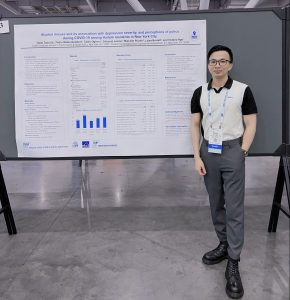A study by CUNY researchers found a significant increase in substance use disorders among young adults in the U.S. between 2011 and 2019.
Using data from the annual National Survey on Drug Use and Health (NSDUH), CUNY SPH doctoral student Thinh Vu and colleagues discovered that substance use prevalence increased from 5.4% to 6.2% over those nine years. Cannabis use disorder was the most prevalent, with a significant increase in prevalence.
The researchers also found substance use treatment use to be lower in Hispanic, Black and Asian participants, as well as young adults of two or more races, when compared to White participants. Across survey years, the prevalence of treatment use fluctuated insignificantly between 10.9% and 16.9%. Most young adults received treatment in self-help groups and residential and outpatient rehabilitation facilities. Those covered by Medicaid/CHIP were more likely to use treatment compared to the uninsured.
Substance use disorders are more prevalent among young adults in the U.S. than any other age group, with severe health and social consequences. Despite this, little is known about patterns in the prevalence of specific types of disorders and treatment use, particularly across different settings.
The research calls attention to the need for improved services for young adults, along with tailored, innovative strategies to motivate them in evidence-based treatments, the authors say.
“This study revealed an alarming level of unmet treatment need and significant disparities in treatment use among young adults with substance use disorders,” says Vu. “To reduce barriers to treatment utilization, more coordinated efforts are needed to leverage policy and structural changes alongside innovations to engage these young adults with treatment care.”




